KTM 450XC-F vs. Yamaha YZ450FX
Comparison Of The Off-Road Powerhouses
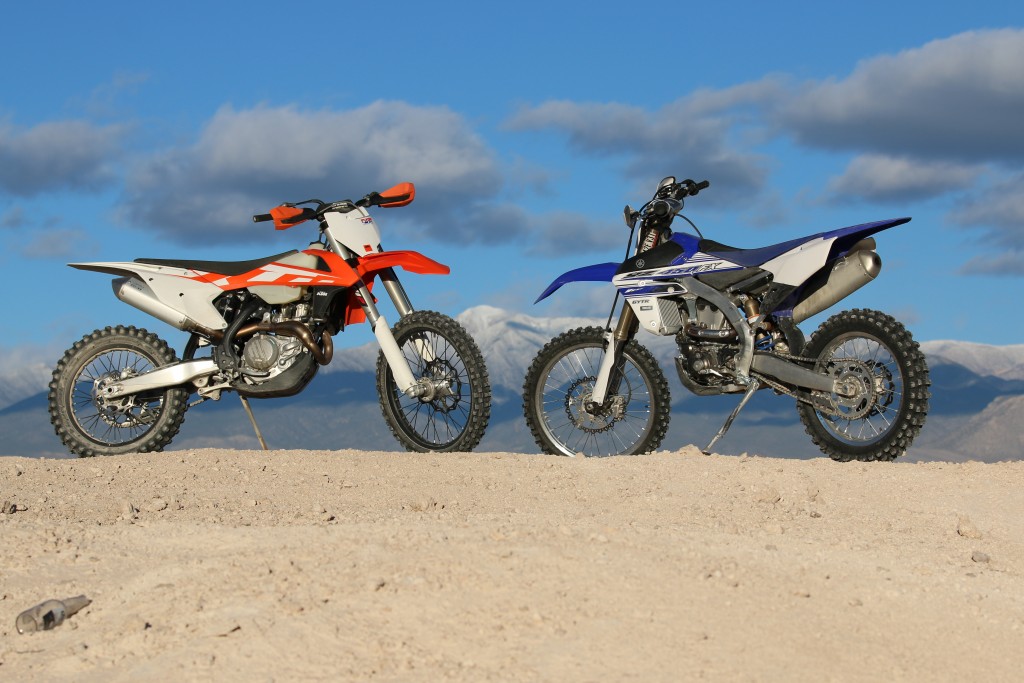
Powerful bikes get a lot of attention. They are sought after by kids who are too young or small for them and ridden by older guys because they can afford them or feel they need them. Some riders even use most of the potential the machines have. With the XC style platform growing in popularity, that is a no-holds competition machine tweaked for some off-road racing usage from its motocross sibling, these two bikes are the class leaders. Is one better than the other or are they just a different version of the same thing? Dirt Bike Test spent plenty of time on both to give you some straight answers in this comparison.
-Both the Yamaha and the KTM are nearly ready to race right off the showroom floor. The KTM a bit more with handguards and a larger capacity fuel tank. The Yamaha missing hand protection but coming with a skid plate the KTM lacks. Each bike has some distinct characteristics and things that are different –knowing and understanding those traits will determine which is better or worse—for you.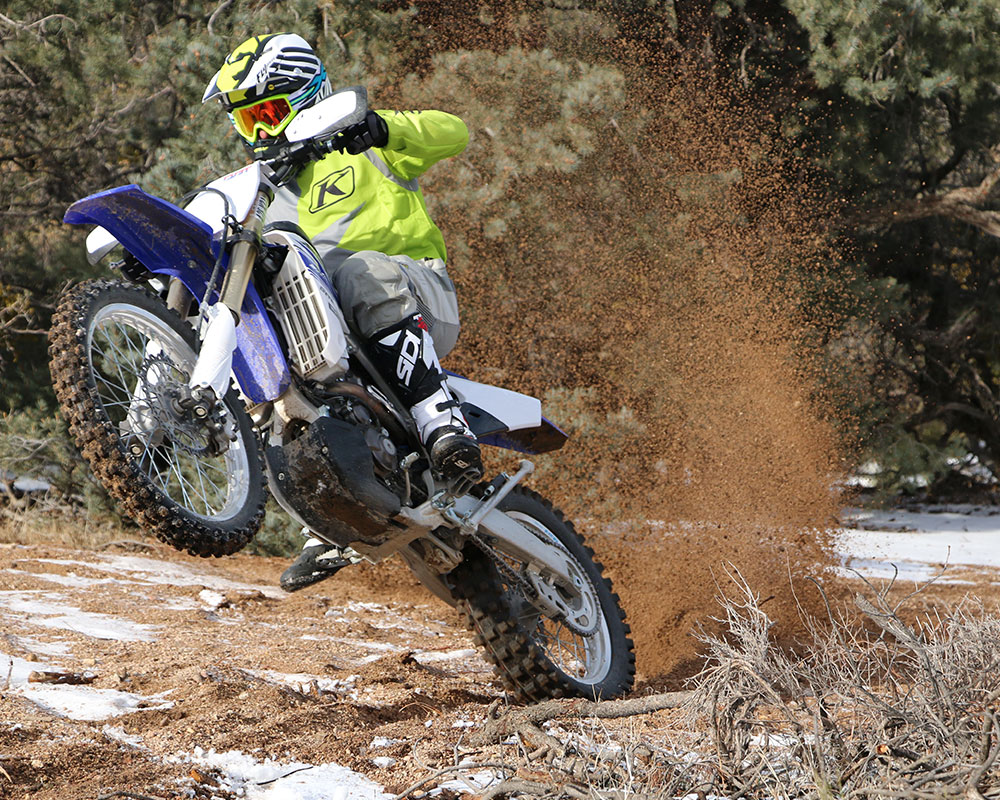
-Just like the 250cc versions of these bikes, there are two areas where these bikes really differ. In the power character and the size the bikes feel and act. The KTM feels like it puts out way more power in a very torquey way even though both bikes are pretty much identical in any kind of comparative test in the real world. The Yamaha has a way more responsive engine that revs quick and has amazing throttle to rear wheel connectivity. The power gives the KTM a bigger bike feel where the Yamaha acts like it is lighter despite a 20-pound weight difference. Yes, the Yamaha is nearly 20-pounds heavier!
-The KTM is smoother but that is also dependent on throttle control. Twist either of these bikes and you’ll feel full-power fury that is anything but smooth. The YZ is more aggressive but it is also very easy to tune the bike into any power character you’d desire with the GYTR Power Tuner in a matter of seconds. KTM’s Power Parts switch is noticeable but we were not able to build maps or tune the power like we would have liked. The KTM stalls a little easier, likely the taller gearing and the impression of massive unstallable torque but anything will stall at zero throttle. The YZ has has less flywheel effect when chugging but resists dying better.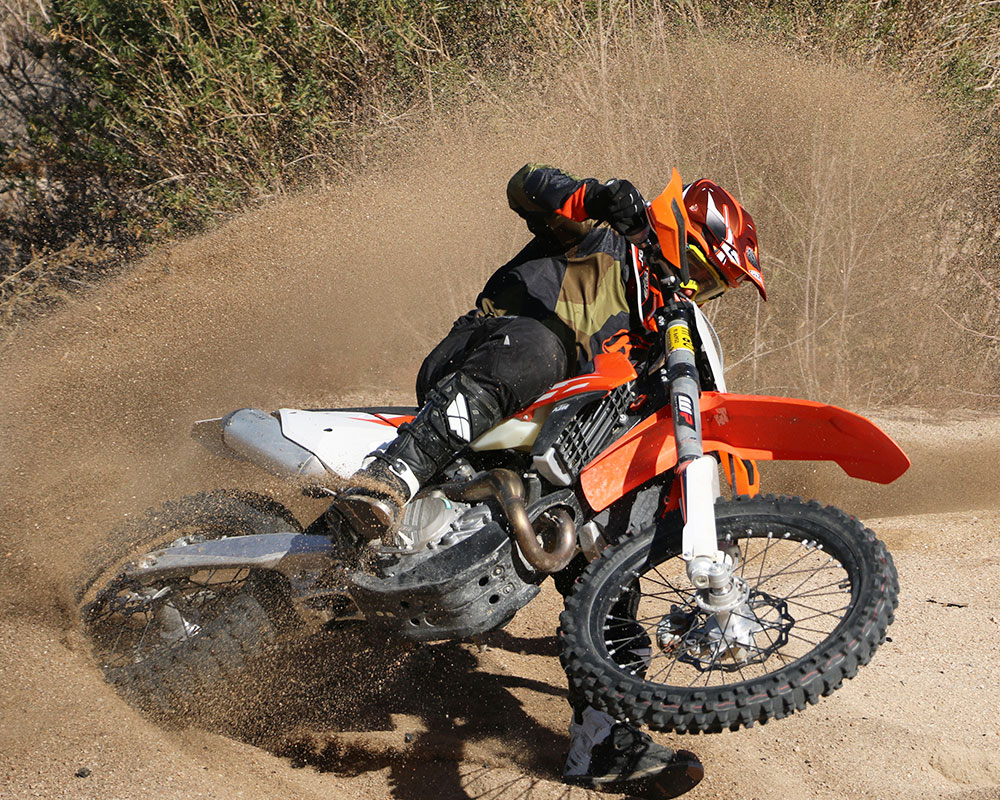
-We’d prefer a six-speed transmission on both of these bikes and we feel that the KTM actually needs it to make it really work in the desert. First gear on the XC-F is tall and fifth is short–if you gear the bike to go 100 MPH you’ll be killing the clutch in the tight stuff in first. The Yamaha is only 3 MPH faster in top speed at 96 MPH but first gear is like a low range when you need it. Yamaha gets the nod for the better transmission selection.
-The YZFX is more compact feeling as long as you don’t look down. Look at the radiator shrouds and where the gas cap usually is and you’ll get confused as it looks wide. The KTM has a more roomy layout. Both are adjustable through the handlebar position but taller riders always preferred the KTM.
-The only time the Yamaha is a little heavier in handling when steering with the handlebars. Any other time you are riding the YZ it feels lighter especially with how effective the throttle is at lifting the front wheel and making it easy to change the bike’s attitude. The most notable difference is that the KTM is more planted to the ground and it feels like it gets better traction while feeling longer. The YZ really likes turning on the front wheel and does not like sliding the back end out as much as the KTM does.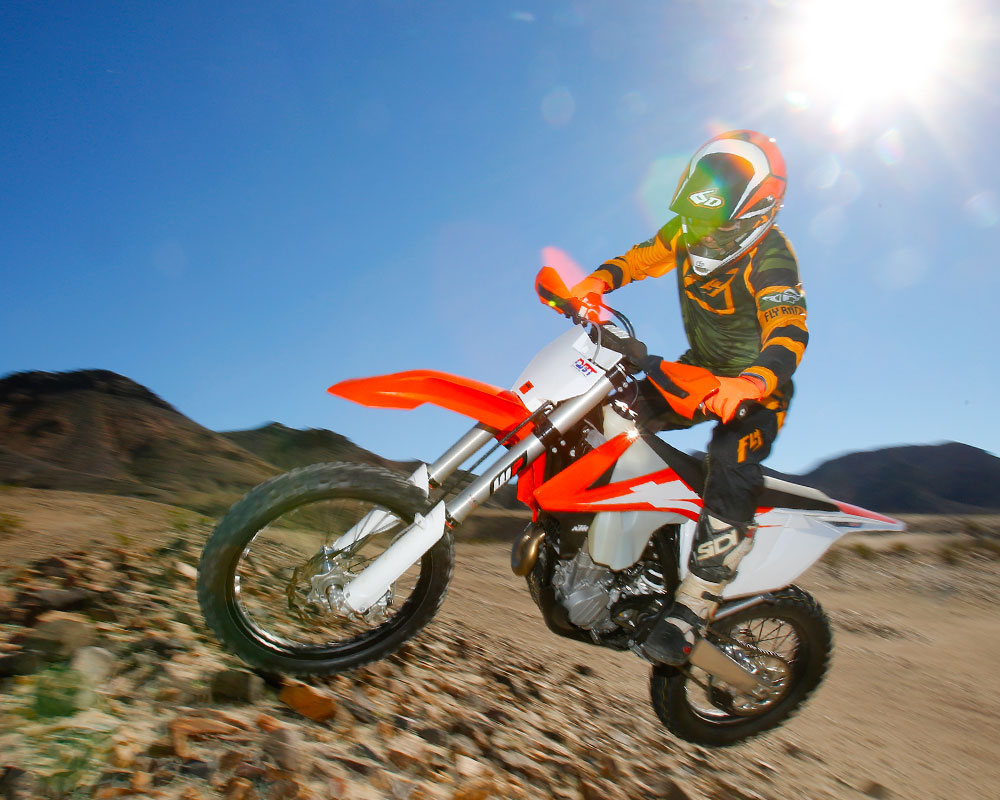
-The KTM is a bit more stable feeling. Get either of these bikes set up too high in the rear (too much weight on the front wheel) and they will both headshake, but set up properly they are both fine.
-In the suspension department both companies have nailed down a great all-around standard setup for racing GP or GNCC-style races. But we can get particular. The KTM has a stiffer and heavier sprung nature, we’d estimate it was set up for a 180-200 lb. rider where the Yamaha seems more set up for a 175 lb. rider stock. The KTM is better on the motocross track or in conditions where stiffness is needed. It does not really like trail riding as much as the YZFX. But the Yamaha is surprising on the track for how well it works off-road. Again, we feel the throttle response really aids the bike here. Both of these bikes are right where they need to be for off-road racing.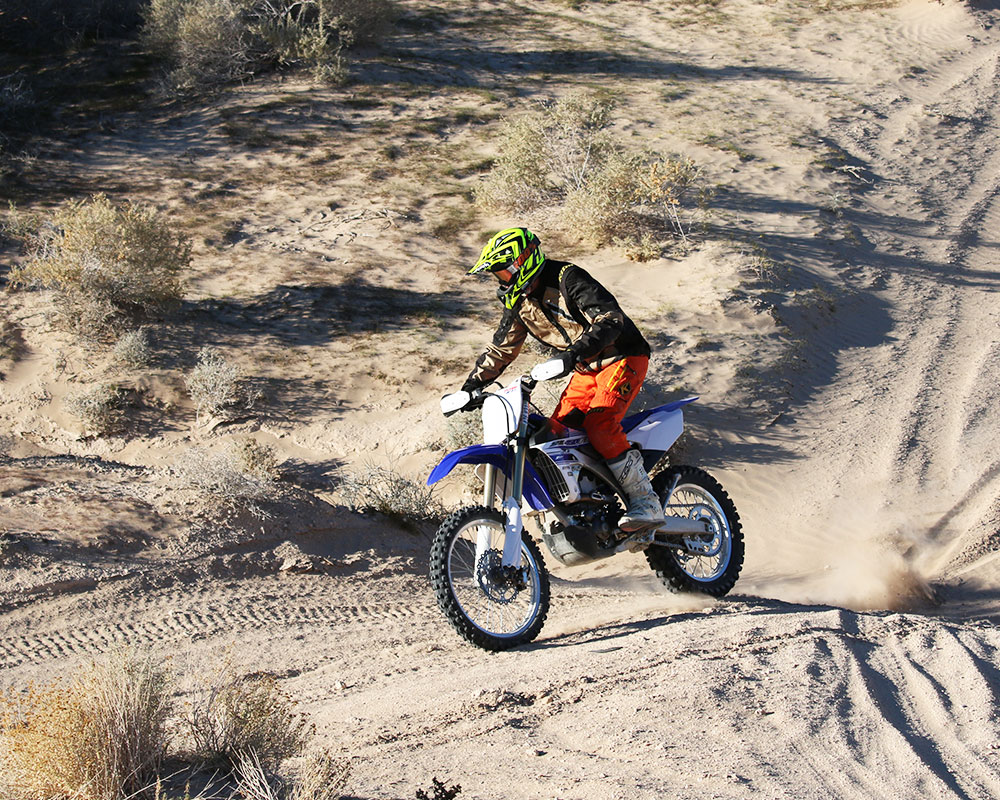
-The YZ suspension is easier to tune and in reality the bike was way less picky about setup. The KTM forks are much improved in 2016 but the clickers take some learning as explained in our test.
-The XC holds itself up better in the stroke especially on steeper jump faces. This is what really separates these bike’s performance from the pure MX cousins they are derived from. Both have decent bottoming resistance (the KTM being stiffer was a tad better).
-The KTM is a lot easier and quicker to do the basic maintenance, even though both are pretty simple. Having a conventional gas tank location it is easier to fuel the KTM in a race. Both have very similar gas range, even though the XC carries a little more.
– Just like on the 250cc bikes, some may view the lack of a kickstart on the KTM as an issue but in reality we never used the one on the Yamaha except to see how it worked. If you can’t keep a battery charged and know when to replace one, you should have bigger worries .
-Even though the KTM’s hydraulic clutch is excellent, Yamaha has really done a great job with the cable activated one on the YZFX. We’re calling it a tie.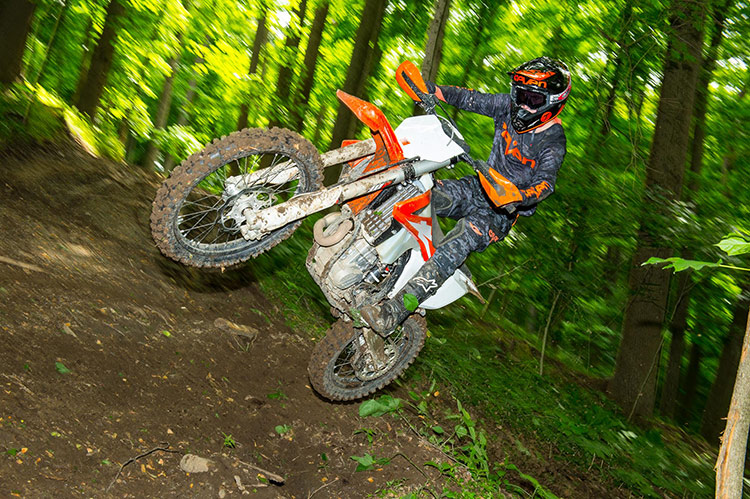
-If we were to differentiate between these two bikes we’d take the Yamaha for GNCC and anything in tighter conditions. As the track or trails open up and speeds go up, where you can use stiffer suspension and more power, the KTM starts to have it’s advantages. In desert conditions the KTM is a better setup except for it’s limited transmission. Also the smaller and lighter the rider the more they preferred the Yamaha, bigger and heavier riders liked the KTM.
-Both brands are tops when it comes to durability. Our only issues on either of these bikes was the Yamaha wearing out its chain buffer pad on the swingarm after 15-hours on the bike and the KTM handguards fading. Our KTM had an issue with the rear shock that was replaced under warranty.
If we are picking a winner it is close but we’d give the advantage to the Yamaha because it is a more versatile bike. The type of racing you do, your dealer or contingency program, the availability of parts (especially tuned aftermarket stuff specific to your needs) are all additional concerns above and beyond the strict performance of the machine.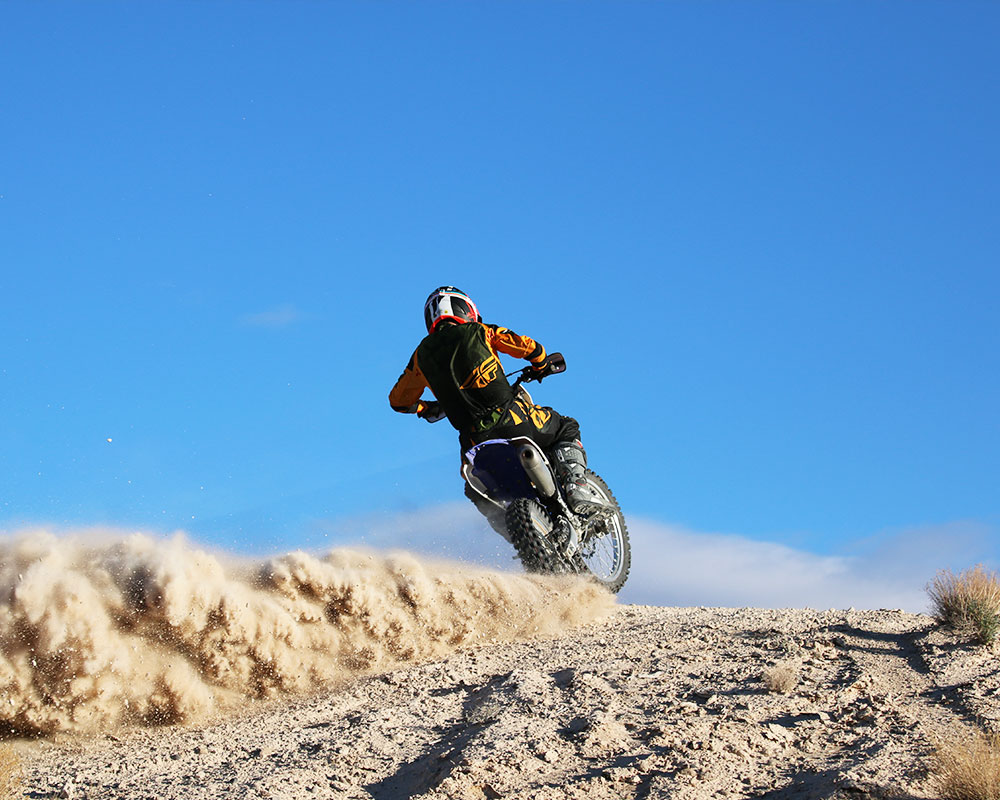
Have something to add to the discussion? Use the comments below to let everyone know.

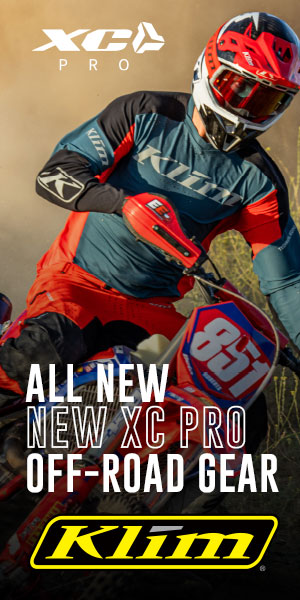
13 Responses to “This or That: KTM 450XC-F vs. Yamaha YZ450FX”
Andy
Awesome. Haha, I am finally in the “older guy who can afford them” category. The FX will replace my WR this year. Looks like a home run. Great write up.
Bill Pitts
Great article. Hard to believe you don’t notice the 20lbs but I guess that is a good thing. Any idea how many miles you got on a tank of gas? I hear fuel injected bikes use less fuel. Most of our Florida hare scrambles are around 30 -45 miles depending on how fast you are. I see IMS is making tanks for the FX now, that is a big plus.
Jimmy Lewis
Mileage depends on conditions. Hard riding (motocross, hare scrambles witrh a fast rider) you can get very close to an hour if that helps.
Jimmy Lewis
We have not ridden the Husky FE450 so we can’t say for sure. But the FE setting is more of a single track or Enduro bike, these are a little more in the MX or GP zone so for desert they are closer out of the box in suspension.
jmpatridge
Getting rid of my 2015 KTM 300 XC soon and just can’t seem to find a write up that clearly states a winner between the two. If you had to purchase one Jimmy, which one would you spend your money on?
Jimmy Lewis
Me personally, I’d choose the Yamaha.
John Chase
Good article. Just purchased the 450FX to ride single track with buddies and to complete in 60+ oldtimer mx. They are $1000.00 cheaper than the XC in my area. Really like it so far. Was worried about the weight, but so far so not an issue.
Texas King
still dont know can someone tell me please which is better for racing with ktm 250 four stroke or yz 250 f fourstroke? i just need to know like if a ktm is reliable bc i have heard rumors that they break down alot and are crappy bikes in general. i have a yamaha currently so i know how they work.
Jimmy Lewis
The KTMs are just as durable as the Yamaha’s in our opinion and from our experience. Each brand has different things you learn to look out for, but as a whole both brands are excellent in durability.
Jimmy Lewis
And what is your proof? Our experience from testing all these bikes is how we determine what we publish. We ride them, own them and tear them apart to check parts, so we know.
Jimmy Lewis
We’ll approve this one this time as it is your opinion, but cut the CAPS next time. Thanks, but we disagree.
Jimmy Lewis
Generally speaking, that is correct. But there are always exceptions. The KTM is more roomy than the Yamaha. And believe it of not, the Beta bikes are more roomy yet.
Jimmy Lewis
As a guy who has a fleet of 200+ hour KTM RFS bikes (rentals for my school) that keep on running, two of them 525s, I respectfully disagree. And since I do know a lot about these things, that is why we make these comments. And FYI, KTM spokes in the RFS era were way worse then Yamaha ones!